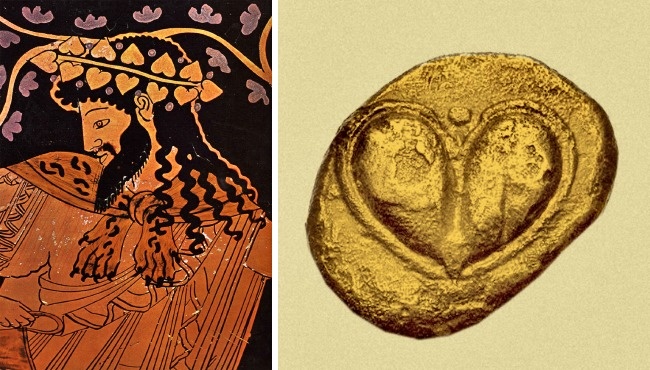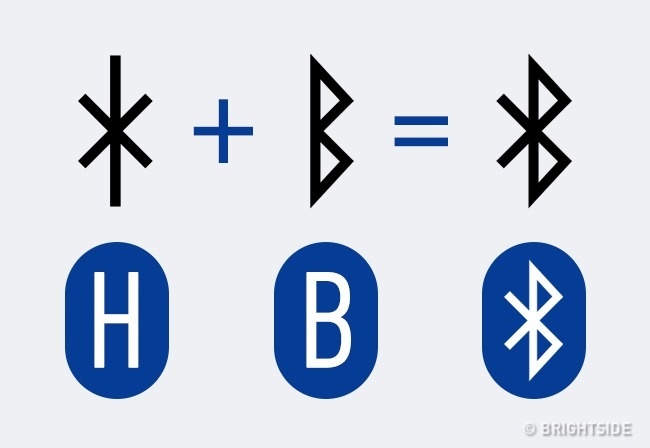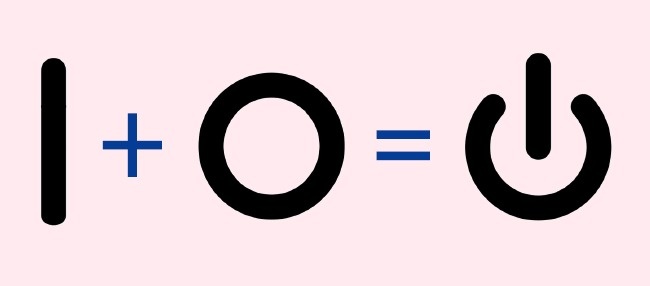Each and every day, we come across a variety of symbols and we know exactly what they mean. It doesn’t matter if it is the power button on our television or computer or if it is the Bluetooth symbol when we want to hook up our mobile phone, they just tend to blend into the background and are there for us when we need them. In reality, very few of us understand what they truly mean.
The following 7 symbols are things that we tend to use on a regular basis and at times, we may use them multiple times of the day. When you understand what actually went into making those symbols, however, it might just take you by surprise.
1. The Ampersand

This symbol stands for a Latin conjunction “ET” which is the same as the English word “and”. It was used to speed up writing and was first invented in ancient Rome.
The Ampersand became very popular in Europe and America and it was even included as a part of the English alphabet. It was only in the 20th century that it began to be omitted. The word is a contraction of the phrase “and per se and.” It is a merger of the letters E and T.
2. The Heart Symbol

When it comes to the heart symbol, most of us recognise it instantly but it has very little to do with the actual shape of the human heart. There are various theories as to how it got its shape.
One has to do with courting swans that meet each other in the middle of a lake, forming the shape. In many cultures swans represent loyalty, love and devotion.
Another popular theory is that the heart symbol represented the feminine form. Those who believe this theory claimed that the shape of the heart is similar to the shape of the female pelvis. This was something that was an important part of Greek society and was even part of the temple to the goddess Aphrodite.
There is also a theory that states that the heart symbol represents the shape of an ivy leaf. In Greek mythology, the God Dionysus was the patron of passion and many drawings included ivy.
3. Bluetooth symbol

In the 10th century A.D., a Denmark king was often referred to as Bluetooth. He was known to love blueberries and one of his teeth had a blue tint.
Bluetooth technology unites multiple devices into a single network. The symbol representing the technology is a combination of two Scandinavian runes: ”Hagall“ (or “Hagalaz”) which is the analogue of the Latin ”H,“ and ”Bjarkan“ – a rune that equals the Latin letter “B.” These two runes form the initials of Harald Blåtand’s name.
4. Medical symbol

This was actually a mistake when it first was adopted. According to legend, Hermes, a Greek God, possessed a magic staff. It looked just like the modern medical symbol. The staff could stop disputes among enemies but it didn’t have anything to do with medicine.
US military doctors confused the Caduceus with the Rod of Asclepius over 100 years ago. The mistake is easily made, but the symbol is now regularly used to represent medicine.
5. Power on

This symbol can be found on practically any electronic device. It actually got its start in the 1940s, as engineers used the binary system to represent switches. It is a combination of the 1 and 0.
6. The peace symbol

This symbol was invented in 1958 as a form of protest against nuclear weapons. It is a combination of semaphore symbols for the letters D and N, representing nuclear disarmament.
7. OKAY

This is a universal symbol that is typically recognised as meaning all right or okay. It is not something that is positive in every area. For example, if you were to do this in France, it would mean that the person meant nothing.
One theory is that the symbol originated as an abbreviation of the birthplace of the eighth US president, Martin Van Buren. He was born in Old Kinderhook, NY.
Similarly, it may be that the seventh US president, Andrew Jackson, used it on finalizing decisions. He often wrote all correct in the German form, ”Oll korrect,” or simply the abbreviation “OK.”
One other possibility is that the symbol is just a mudra, a Hindu or Buddhist ritualistic gesture.
Via: Bright Side
Be sure to share this with your friends on Facebook
